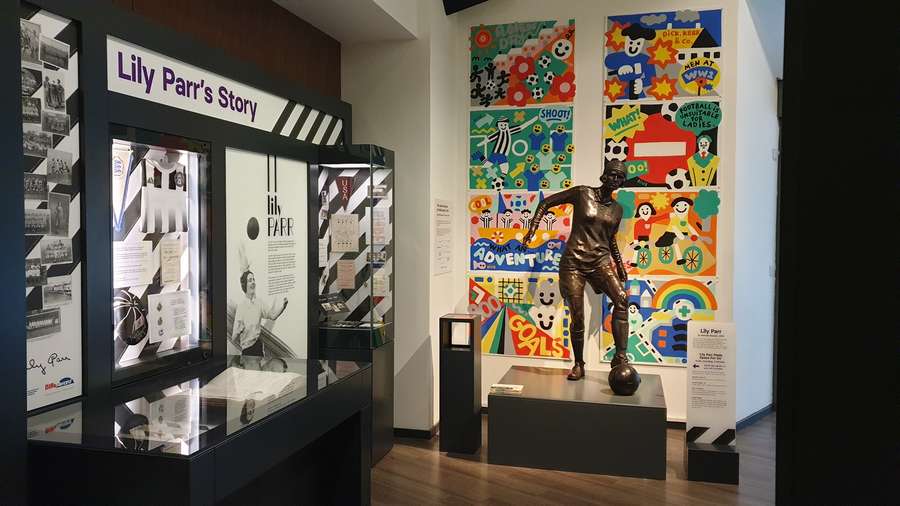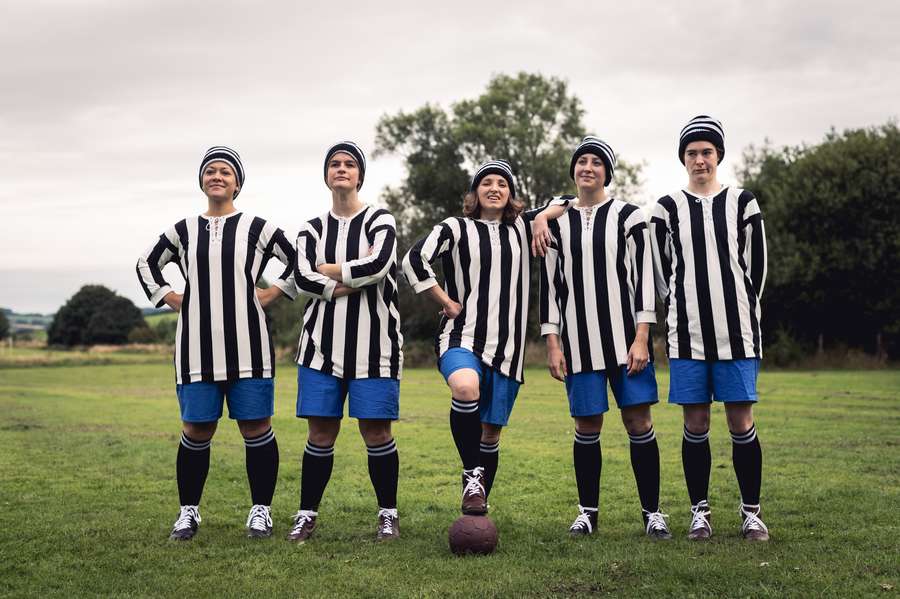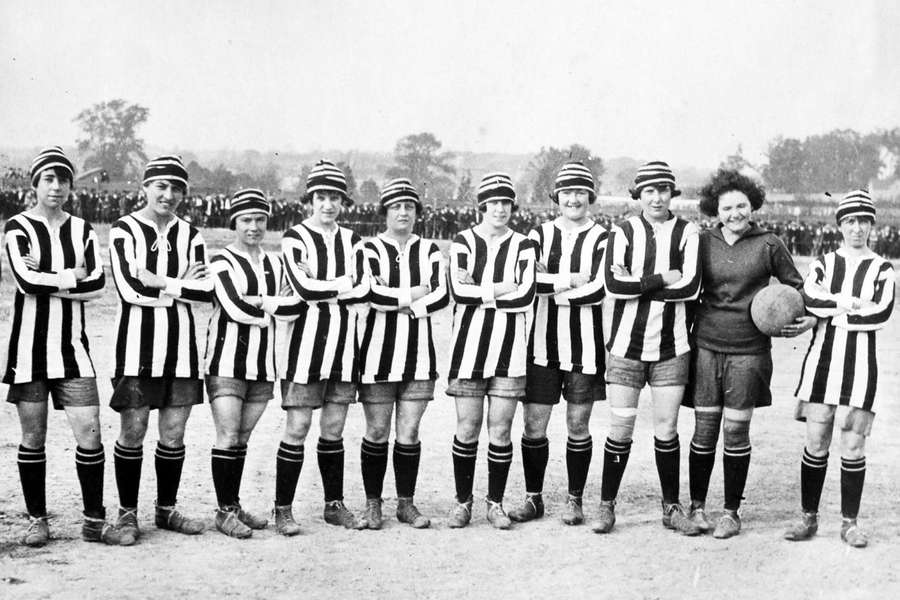The organisation was founded in Paris on May 21st, 1904 by officials from Belgium, Sweden, Switzerland, Denmark, France, Holland and Spain.
Just under two decades later, in 1921, it was strong enough to commit barbarism: banning women's football.
The boycott lasted half a century and set the sport back irreparably.
Why did FIFA ban women from playing football?
During the First World War, the men of England went to the front and the women went to the factories. Women workers took up the sport, as was common for male workers in industries around the world, and women's football flourished.
They began performing on British pitches initially to raise money for charities treating the wounded of the War, but as the stadiums filled up, business picked up.
In 1917, the first women's tournament in history was born: The Mutionettes Cup .
The name comes from the fact that almost all factories between 1914 and 1918 started producing ammunition and weapons.
One team came to dominate the competition - something like the Manchester City of the time. This squad was Dick Kerr Ladies FC, the team from a locomotive (and ammunition) factory called "Dick, Kerr & Company Ltd" based in Preston, north of Liverpool.
The firepower of these ladies was no joke. Dick Kerr won 759 games, drew 46 and lost just 28 in their entire history.
The star of the team was a left winger called Lily Parr.
Known for a golden stub that cracked the wooden goalposts, Parr scored around 1,000 goals in her career, according to England's National Football Museum.

During the war years, the games of the munitions girls filled the precarious stadiums of the time.
In 1920, Dick Kerr Ladies FC beat the French team 2-0 in front of 25,000 people in what was the first international women's association football match.
But what seemed like joy turned into trouble.

The war had been over for two years, the men had returned from the front, but women's football continued to attract crowds.
On December 26th, 1920 (Boxing day in the UK), Dick Kerr Ladies FC brought almost 70,000 people to Goodison Park - Everton's stadium.
It was more than the 50,000 fans who went to the Liverpool - Arsenal men's derby at Anfield on the same day and in the same city.
It was also more than the crowd at the first FA Cup final after the First World War.
This Dick Kerr game only lost the record of highest women's football attendance in 2019, after 99 years.
The historic match, which ended 4-0 to Dick Kerr over St Helens Ladies, raised over £1million in today's money for unemployed and broken ex-servicemen.
It was the climax of this glorious story, because the following year FIFA took action.
Jealousy leads to boycott
Believing that the women's league had become a competitor to the men's league (either out of sheer jealousy or machismo, or all of the above), the English clubs lobbied the FA and in 1921 the Football Association (FA) passed the following resolution: "The game of football is quite unsuitable for women and should not be encouraged. For this reason the council requests clubs belonging to the association to REFUSE the use of their grounds for such matches."
The FA has also banned its members from acting as referees and linesmen at women's matches.
And there was a really nasty twist to the measure: girls couldn't play in schools either because, at the time, British schools and universities were affiliated to the FA.
And since the FA was the most powerful member of FIFA, the ban went international.
Already powerful, FIFA decided that any of its members who allowed women to play in their stadiums would be banned from the FA.
The ban lasted until 1971.
An irreparable blow
Unlike tennis, volleyball and so many other sports, women's football was boycotted and reduced to a mere 'recreational activity' for 50 years.
No wonder the first women's World Cup didn't take place until 1991.
This week, at its 74th Congress, FIFA announced the first Women's Club World Cup for 2026.

Other actions that FIFA promises in its "strategic objectives" for 2026 are:
- Every FIFA member should have at least one woman on its executive committees.
- Doubling the number of associations with youth leagues, as well as "expanding" football in schools and academies.
- The first 'Women's Football Business Plan'.

As well as more money and support for the Women's Cup, FIFA is already offering financial support for associations to put in place football development projects for girls.
One of the promises that hasn't happened yet is to have a third of FIFA's central committee members made up of women by 2022. It's now 2024 and only six of the 37 members are not men.
Yes, FIFA is trying to mitigate the boycott of 1921, but if it is to repair the damage it has done, it needs to do much more.
Without the unreasonable ban, men's and women's football could today be on an equal footing with the WTA and ATP in tennis, for example.

How do you fix a mess of this size?
After the war, even without support or a stadium to play in, Lily Parr continued to play while working as a nurse in a psychiatric hospital in Preston.
She hung up her boots in 1951.
In 2002, Parr became the first woman to enter the English football hall of fame.
The legacy and struggle of Lily Parr, Marta, Megan Rapinoe, Mia Hamm, Britz, Formiga and many other "munitions girls" should be remembered on this FIFA anniversary.





